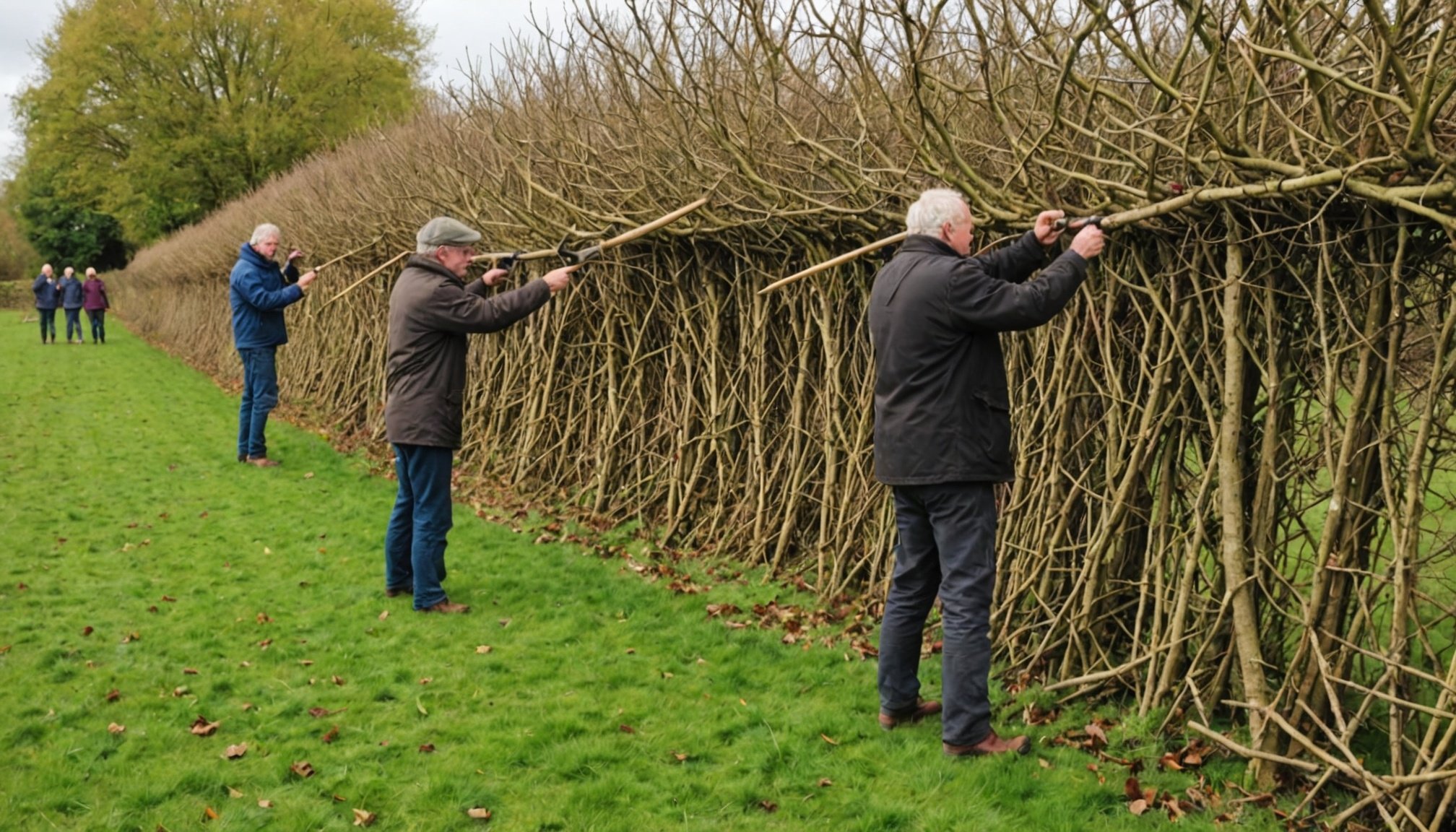Educational Resources for Traditional Hedgelaying
The art of hedgelaying is a traditional craft that requires precision and skill. To learn hedgelaying, one must understand various techniques and their significance in maintaining healthy hedgerows, which are essential for biodiversity and agriculture. Historically, hedgelaying was not only practical for stock control but also aesthetically valuable.
Hands-on experience is invaluable in mastering the art of hedgelaying. Engaging in hedgelaying workshops offers the opportunity to practice under the guidance of skilled artisans. These workshops emphasize the importance of tactile learning in rural crafts, allowing participants to develop the necessary dexterity and understanding through direct involvement.
Also read : Discover the Charm of London”s Historic East End: Join a Guided Walking Tour of Its Iconic Markets!
For those interested in diving deeper, several resources are recommended for both beginners and enthusiasts. Books dedicated to traditional crafts often cover hedgelaying techniques extensively, providing insights into the regional variations and tools used. Joining local hedgelaying societies or online communities can foster connections with experienced practitioners willing to share knowledge and advice.
These educational offerings ensure that the craft of hedgelaying continues to thrive, preserving cultural heritage while supporting modern ecological efforts. Through workshops, literature, and community engagement, aspiring hedgelayers can cultivate their skills and appreciation for this ancient tradition.
In the same genre : Discover the Best Locations to Experience Authentic British Blacksmithing Workshops
Top Locations to Learn Hedgelaying in the UK
Discovering the best places for hedgelaying provides an opportunity to immerse yourself in traditional countryside skills. Whether you’re a beginner or a budding master hedgelayer, these courses in the UK offer something for everyone.
Location One: [Site Name]
Delve into [Site Name], where the art of hedgelaying is taught with precision and tradition. Known for its dedicated courses, this site offers comprehensive training with notable instructors possessing deep-rooted expertise. The hedgelaying courses UK here cater to a variety of skill levels, allowing novices to build a solid foundation while enabling seasoned enthusiasts to refine their methods.
Location Two: [Site Name]
At [Site Name], the workshops are regularly available, ensuring accessibility for all interested learners. Acclaimed for its positive student testimonials, the site showcases numerous successes. The vibrant ecosystem surrounding hedgelaying here enriches the learning experience, highlighting the essential balance between nature and cultural heritage.
Location Three: [Site Name]
[Site Name] presents an in-depth analysis of course structure, designed to foster comprehensive understanding. The curriculum underscores hedgelaying’s role in biodiversity and conservation, ensuring learners grasp its environmental significance. Students experience significant growth as they engage in hands-on practice, merging theory with effective execution, ultimately promoting sustainable land management.
Historical and Ecological Context of Hedgelaying
Hedgelaying, a traditional craft dating back centuries, has significantly contributed to rural landscapes, particularly in the UK. Historically, it served as a method to enclose fields and manage livestock without extensive fencing. Over time, the tradition of hedgelaying has become an integral part of maintaining the rural environment’s cultural identity.
In terms of ecological benefits, hedgelaying plays a crucial role in supporting biodiversity. Well-maintained hedgerows provide habitat and shelter for a wide variety of wildlife, including birds, insects, and small mammals. These living boundaries create corridors that connect fragmented habitats, allowing species to move safely across landscapes. This interconnectedness helps maintain biodiversity and improves the resilience of local ecosystems.
Furthermore, hedgelaying is pivotal for sustainable land management practices. The act of trimming and laying hedges encourages new growth, enhancing their density and longevity. This process not only boosts the hedge’s ecological value but also contributes to rural sustainability by preventing soil erosion, improving water retention, and enhancing the landscape’s aesthetic appeal. By understanding and appreciating the history of hedgelaying and its ecological significance, individuals and communities can continue to support and promote sustainable agricultural practices.
Practical Tips for Beginners in Hedgelaying
Embarking on a hedgelaying journey can be both exciting and daunting for beginners. Equipped with the right hedgelaying tools and strategies, it’s possible to transform overgrown hedges into artistic, living fences.
When getting started, a solid set of hedgelaying tools is crucial. Essential items include a billhook for cutting and trimming, sturdy gloves to protect your hands, and a hedgelayer’s axe for heavier branches. A mallet, stakes, and binders are also needed to support and secure the hedge structure.
Before initiating your project, survey the hedge to assess its condition. Remove any deadwood and ensure all tools are sharp and ready. Understanding the hedge’s species and location can guide your technique and approach.
Common challenges for novice hedgelayers involve dealing with uneven ground and varying hedge growth. To tackle these, use a line of stakes for guidance, ensuring consistency in height and alignment. If the hedge seems unruly, don’t rush. Practice patience and precision, and the results will reflect your care.
Approach hedgelaying with confidence by starting small. Engage with local clubs or tutorials for feedback and support, growing both skills and enthusiasm.











